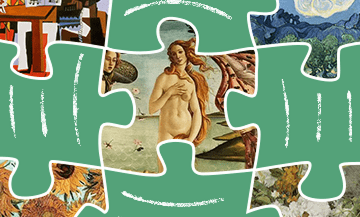What is still life: about beauty in the little things
Still life invites us on a fascinating journey through everyday objects—delicate flowers in a vase, ripe fruits on the table, precious jewelry, and even mundane kitchenware. This art genre allows us to view the familiar from a new, astonishing perspective.
In still life, there is hidden harmony in forms, colors, and light. The artist, like a virtuoso conductor, orchestrates this symphony, creating a melody from objects and their reflections. Each detail holds its own mystery, and the overall artwork conveys meaning and wisdom.
As an artist, I assure you, still life not only decorates our interiors but also teaches us attention to detail, patience, and a deep understanding that the world around us is full of beauty and symbolism.
Still life in drawing, painting and art
Still life is one of the most unique and inspiring genres in the world of visual art. Since its inception, it has showcased the beauty and elegance of the objects that surround us in everyday life.
Still life in drawing and painting has always served as a mirror reflecting moments, emotions, and experiences. It allows us to see something more in ordinary objects.
In its traditional understanding, still life involves the depiction of inanimate objects: flowers, fruits, dishes, fabrics, sometimes combined with elements of nature.
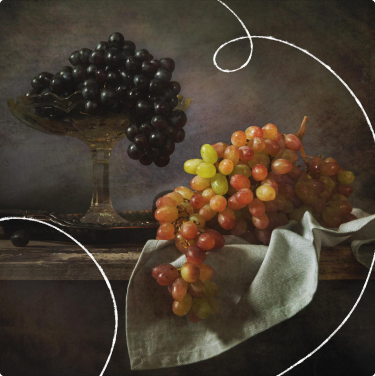

However, the diversity of themes and execution methods makes this genre incredibly multifaceted. From classic compositions with the expressive glow of fruits and flowers to modern interpretations with complex nuances and narratives.
Moreover, still life is an important platform for experimenting with color, light, shadows, and textures. The artist plays with color combinations, reveals subtle shades in paintings, which is a true creative challenge.
Look around. Inspiration is everywhere: on the windowsill in the bedroom, in the kitchen, among familiar objects. This is what still life tries to convey.
History of the emergence and development of still life painting
Still life painting is a fascinating art that makes us marvel at the beauty of simple objects. The history of still life dates back to ancient times and extends to the present day.
The earliest mentions of still life painting can be found in Ancient Egypt, where various objects—food, utensils, flowers—were depicted on temple walls. These images show attempts to capture the beauty of everyday items.
In the Middle Ages, still life painting became more popular, especially in the Netherlands. Artists of that time often portrayed everyday objects, fruits, and flowers, creating remarkable compositions filled with symbolism and deep meaning.
The golden age of still life came in the 17th century, when great masters like Jan Davidsz de Heem and Willem Claeszoon Heda painted stunning works where each object appeared so realistic that one wanted to reach out and touch it. Their works were characterized by intriguing compositions, masterful handling of light and shadow, and delicate color shades.
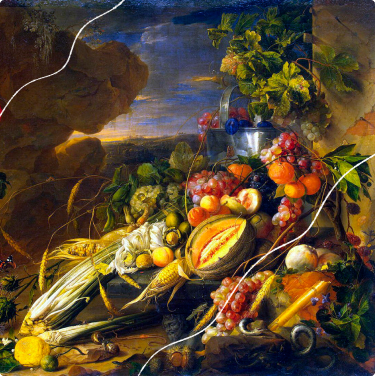
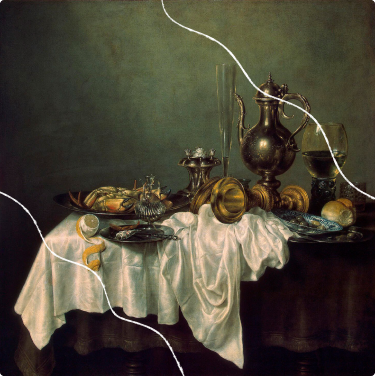
The uniqueness of still life lies in its ability to convey hidden symbolism and allegories. The placement of certain objects on the canvas could reflect the changing nature of time or the predominance of material goods.
Over time, still life painting has not lost its relevance. Contemporary artists continue to create remarkable works, exploring various styles and techniques that enrich the beauty of the surrounding world.
From the classic works of great masters to modern experiments, still life continues to amaze us with its depth. By painting still lifes, artists convey not only visual aesthetics but also a piece of their life and soul.
Basic laws of staging still life
Still life is a painterly world where objects come to life with special emotions and meanings. It is important to understand that it is not just a composition of various items but rather a story told through objects.
The first and perhaps most important rule of setting up a still life is the choice of objects. They should not only be beautiful but also convey something. For example, a bunch of grapes might symbolize fertility and abundance, while a withered flower could represent fading youth. The key is to find objects that evoke emotions and an internal response from the viewer.
The second rule is composition. Each object should have its place, creating a harmonious combination of forms and colors.
The third rule is light. Light is a key element in setting up a still life. It creates mood and shadows, giving objects volume and shape.

The fourth rule is texture. Each object has its own unique texture and surface. The ability to convey these details is crucial for creating realism and a sense of touch with the objects.
And finally, the fifth rule is sensuality. A still life should evoke emotions. It should make the viewer ponder, experience a certain moment, and enter the world created on the canvas or paper.
Subgenres of still life painting

Floral:a burst of diverse colors and decorative plants creates a special atmosphere. Bright bouquets, delicate flowers, picturesque compositions— all of these can be beautifully captured on canvas.

Gastronomic:in this genre, the artist creates illusory scenes of juicy fruits, appetizing berries, and exquisite interiors. Each composition presents us with spicy narratives hidden behind delicious details.
 Domestic:still lifes with household items. Here, the artist tells about everyday things that surround us and play an important role in our lives. Paintings with cups, dishes, books, and other items create a mood of comfort and tranquility, recreating the atmosphere of home.
Domestic:still lifes with household items. Here, the artist tells about everyday things that surround us and play an important role in our lives. Paintings with cups, dishes, books, and other items create a mood of comfort and tranquility, recreating the atmosphere of home.

Religious:depictions of church attributes— candles, icons, lamps, willow branches.

Hunting:in these works, the artist captures moments characteristic of the animal world. We see vivid birds, elegant cats, or majestic horses— the perfection of the relationship between humans and animals.
By creating these artworks, artists invite us to look into the ordinary and see something unique and magical. The subgenres of still life painting leave their mark on the hearts of viewers, bringing everyday life to life and embellishing it with aesthetic perfection.
Types of still lifes according to the plot for each room
- For the living room: “Feathers in the Corner” — a still life with a luxurious vase filled with flowers and colorful bird feathers. They will add charm and vibrancy to the room’s interior.
- For the bedroom: “Gentle Nature” — a still life with a calm and romantic landscape. Delicate flowers resting on soft fabric will create a peaceful and serene atmosphere, perfect for rest and relaxation.
- For the kitchen: “Blossoming Aromas” — a still life with a variety of fruits and vegetables arranged in beautiful compositions. Bright colors and juicy hues of the produce will bring a sense of freshness and inspiration to the culinary space.
- For the children’s room: “Playful Dreams” — a still life with toys, plush animals, books, and vibrant flowers. Such a painting will stimulate a child’s imagination and creativity, creating an environment of joy and play.
- For the study: “Path to Success” — a still life with motivating elements like books, pens, clocks, and photos of famous figures. This still life can even inspire you to work!
Features of academic still life

At the heart of academic still life lies a deep study of form, color, light and shadow, and texture, which helps the artist create a work that captivates the eye and evokes admiration.
One of the striking features of academic still life — is the meticulous attention to every detail. Artists examine every tiny aspect of the object to perfectly recreate a realistic image.
Another interesting feature — is the ability to convey emotional depth. Artists skillfully play with textures and colors, creating paintings that evoke specific associations and emotions in the viewer. They can capture the swirling rosebuds, the tenderness and delicacy of peach skin, or the long-awaited awakening of nature in a spring bouquet.
Still, academic still life — is an art that demands patience from the artist. Through a variety of forms, colors, and materials, the creator can gift the world a work of art that touches every fiber of the viewer’s soul.
Tools, materials and techniques of still life painting
The primary tool — is the paintbrush. With various shapes and sizes of brushes, the artist can create a range of textures and lines on the canvas. A fine, soft brush allows for smooth transitions and detailed work, while a broad one creates bold strokes and textures.
The artist works with oil, acrylic, or watercolor. Each medium has its own characteristics, giving paintings a unique atmosphere. For instance, oil paints have rich colors and textures, while watercolor techniques help achieve lightness and transparency.
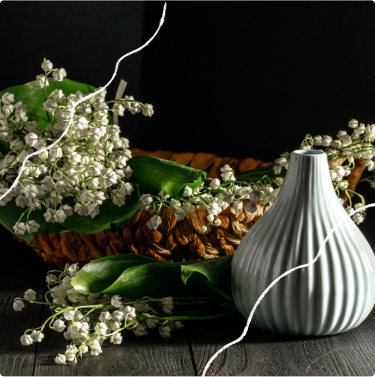
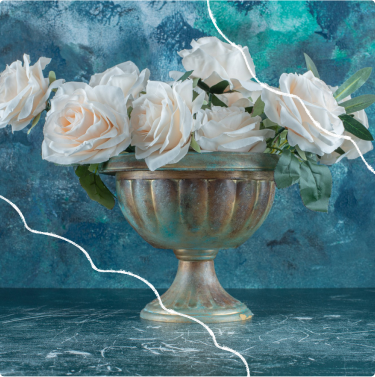
Techniques:
- Gradual Build-Up: this technique involves applying layers of paint gradually, starting with the darkest tones and moving towards lighter ones.
- Blending: in this technique, paints are applied with soft and diffused strokes.
- Detailing: emphasis is placed on meticulous detailing to create a realistic image.
- Impressionism: working with large brushstrokes, early impressionists used this technique to create emotionally rich works.
Still life painting — is an engaging and fascinating art form that requires creativity, imagination, and skill. Remember that every artist has their own style and approach to still life, so don’t hesitate to experiment and find your own vision of this genre.
Famous masters and works in the still life genre
One of the most famous still life masters was Gustave Courbet. His work “Still Life with Shells and Art Supplies” is cherished for its incredible detail and the skill with which the artist conveyed light, shadows, and textures.
Another prominent figure in this genre — is the unparalleled Claude Monet. His works are filled with extraordinary freshness and natural light. In his still lifes, you can see the beauty and charm of nature as if they come to life right on the canvas. Monet’s brush provides the opportunity to immerse oneself in a world of delicate shades and lightness, which Monet masterfully creates.
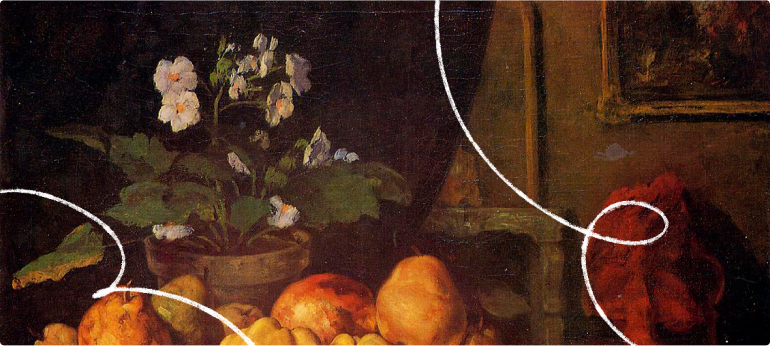
Let’s also remember Vincent van Gogh. His works are filled with brightness and deep emotions. In every brushstroke on his canvases, you can see a vibrant burst of energy and passion. Van Gogh’s still lifes reflect his unique style and highlight the details that can transform an ordinary object into a work of art.
We should not forget other great masters who made significant contributions to the development of the still life genre. Among them is Georges Braque, whose paintings transport us to a world of harmony and balance. He had the ability to transform simple objects on the canvas into soulful, balanced, and elegant compositions.
Still life — is not just the depiction of objects, but an art of capturing life in moments that leave a lasting impression on our souls.
Still life in contemporary art
Still life, an aesthetic phenomenon in contemporary art, has transcended the mere depiction of a static genre and evolved into a visual and soulful delight. It has become a source of inspiration for artists, where every element — is a focal point and reflection of hidden meaning.
Modern still lifes intertwine with various styles and techniques, creating a wonderful blend of classic and contemporary on a single canvas.
Color and form in modern still lifes do not adhere to strict rules and provide the artist with complete freedom of expression. They resonate with the main trends in contemporary art, surpass familiar forms and captivate the eye with their originality. Bright colors and unconventional compositions become the key to creating a unique still life.
Yet, the profound beauty of still life lies not only in its physical manifestation but also in its ability to evoke emotions and convey deep meaning. Each object on the canvas carries its own mystery, its own story. It speaks to the observer in its own language, poetically revealing themes of love, solitude, transience, or eternity.
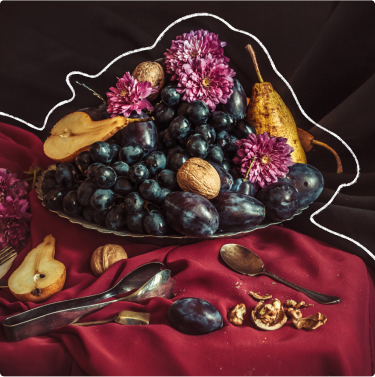

Still life in contemporary art — is a way to see beauty and depth in everyday objects that are completely unnoticed at first glance.
Let’s decorate your home together — order still lifes from my gallery. I create various compositions and works of art that inspire and make you a little happier.
- 90% of my paintings decorate interiors in homes and offices in Ukraine, and 10% around the world.
- 100+ of my clients came to me through recommendations from acquaintances and other clients.
Contact me personally to order a painting.
Phone: +38 098 770 10 22
I look forward to our fruitful and inspiring collaboration!
Question-answer
- Inanimate objects: the main element of a still life is inanimate objects. These can include flowers, fruits, vegetables, dishes, tools, decorations, and other items.
- Composition: a still life is the art of creating a composition from selected objects. The artist strives to arrange the objects in a way that forms a harmonious and attractive canvas.
- Attention to detail: still lifes feature detailed and realistic depictions of objects. The artist typically focuses on textures, lighting, and shadows to create a volumetric and convincing visual perception.
- Play of light and shadow: in still life, lighting plays an important role. Artists use various light sources and create interesting shadow effects to add depth and volume to the image.
- Symbolism: some objects in a still life may have symbolic meanings. For example, clocks indicate the passage of time, a sparrow signifies the arrival of spring, and candles represent reconciliation.
- Absence of action: unlike other genres, still lifes typically lack active figures or events. It depicts a static moment.
- Aesthetics and beauty: the color scheme, composition, and overall impression create a sense of harmony and tranquility in a still life.
In the world of still life, there are many different types, each with its own unique character and visual style:
- Flower still lifes: these works embody the beauty and elegance of flowers. They may depict single flowers or bouquets, creating an atmosphere of tenderness and romance.
- Fruit still lifes: juicy fruits, vegetables, and berries become the main characters in these still lifes. They add vibrant colors and natural freshness to the works.
- Still lifes with dishes: cups, glasses, porcelain dishes—these can all become elements of a still life.
- Marine still lifes: inspired by the sea and coastal landscapes, these still lifes often depict shells, ships, and other maritime elements.
- Modern still lifes: in modern still lifes, you can see unusual combinations of objects, the use of technical devices, and elements of pop culture.




